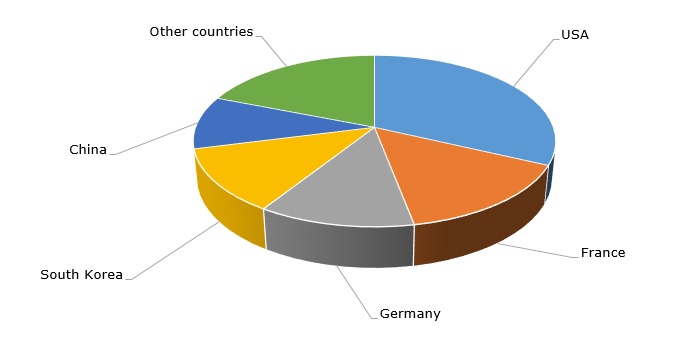Polyisobutylene (PIB) is an important elastomer that is used to produce tires (more than 70% of global PIB consumption), fuel and lubricant additives (10%), automotive mechanical goods (8%), adhesives and sealants (3%), and other products (6%). These consumption sectors enjoy PIB’s thermal stability, good flexibility at ambient temperature, high resistance to heat, vibration dampening capacity, and excellent impermeability to gases.
Diverse, innovative and highly sophisticated application areas make polyisobutylene manufacturers to seek specialization, customization, segmentation, targeting and fine-tuning. Manufacturers, therefore, develop flexible and diversified portfolios of PIB-based products with different viscosities and molecular weights. As a rule, advanced and value-added end-products find larger niches in the developed world, where PIB is mostly produced and consumed.
Top 5 polyisobutylene-producing countries

In line with this and buoyed by good prospects of the PIB market, different companies in developed countries plan to expand existing PIB capacity or launch new PIB-manufacturing facilities. Thus, Lubrizol is building a new PIB unit in Deer Park, Texas (it will come on stream in 2019) in addition to its current 90k mty PIB facility. JX Nippon Oil & Energy Corp follows the suit with a new 5k mty PIB plant at Kawasaki to become operational in Q4 2019 (the company currently operates 7k mty PIB facility in Kawasaki).
Despite these additions, developing countries are seen by many as a major force responsible for driving global demand for PIB in multiple consumption sectors. The rise in consumerism is the main factor affecting the PIB demand increase. To meet this rising demand, many developing countries will require substantial expansion of the available PIB capacity. With such projects as a 50k mty highly reactive polyisobutene (HR-PIB) production plant, jointly unveiled by BASF and PETRONAS Chemicals in Gebeng (Kuantan, Malaysia), this target achievement could become realistic.
More information on the global polyisobutene market can be found in the in-demand research report “Polyisobutylene: 2018 World Market Outlook and Forecast up to 2027”.
